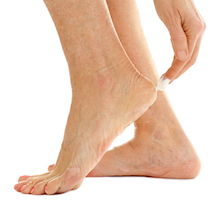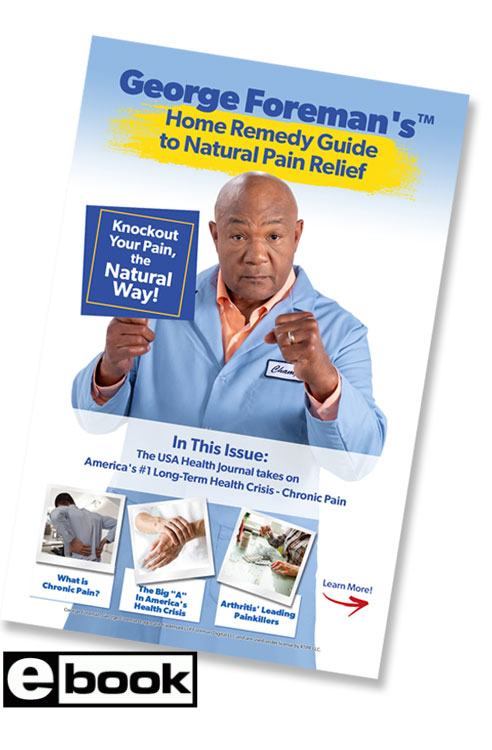7 Ways to Reduce Plantar Fasciitis Pain
7 Ways to Reduce Plantar Fasciitis Pain
Do you have pain in your heel when you get up in the morning? If you do, you might have plantar fasciitis. There is a band of thick tissue connecting your toes and heel called the plantar fascia. The fascia can become inflamed, which leads to chronic heel pain.
What Causes Plantar Fasciitis?
In most cases, plantar fasciitis tends to be an injury related to overuse. Repetitive movements often related to sports, such as jumping or running, can cause the fascia to tear slightly. Overuse also may lead to irritation and inflammation.
Although sports and repetitive movements are the most common cause of plantar fasciitis, wearing shoes that are not supportive, such as high heels, can contribute to the condition. Poor foot mechanics and being overweight also are risk factors for developing plantar fasciitis.
Symptoms
Plantar fasciitis involves pain on the bottom of the foot. The pain may be aching or stabbing and is usually worse when you take your first steps in the morning. It may also start hurting after standing for long amounts of time. In many cases the pain is worse after doing some form of exercise but not during the activity.
Because of the discomfort, some people unconsciously change the way they walk or the distribution of weight on their feet. This can lead to additional problems with the hips and legs.
Tips to Reduce Plantar Fasciitis Pain
Most cases of plantar fasciitis resolve with only home treatment. Starting home treatment at the first sign of symptoms is important to prevent the condition from getting worse and decrease pain quickly. The following tips may help reduce plantar fasciitis pain:
#1) Wear Orthotics
Orthotics include arch supports that treat a variety of foot and leg conditions including plantar fasciitis. Although over the counter arch supports may help, custom-fit supports prescribed by a podiatrist may be best. Orthotics allow for proper weight distribution and foot mechanics.
#2) Use Ice
Placing ice on the painful part of the heel is often helpful to treat plantar fasciitis. Either apply ice directly to the heel for about 20 minutes or do an ice massage. An ice massage on the heel is easy to do. Fill a plastic bottle with water and allow it to freeze for a few hours. Sit in a chair and roll your painful foot back and forth over the frozen bottle for a few minutes. An ice massage can help reduce inflammation and pain.
#3) Apply a Topical Pain Relief Lotion
A topical pain relief lotion is not only useful to reduce muscle pain, but it may also help with plantar fasciitis. Applying a topical pain relief lotion to the bottom of the foot can help to decrease the pain. Products with ingredients like menthol, arnica, or trolamine salicylate are the most helpful. Apply the lotion to the bottom of the foot and allow it to dry before walking around.
#4) Stretch
Performing certain stretches for the bottom of your foot may lengthen the fascia and decrease pain. For instance, sit on a chair and cross your painful foot over the knee of your opposite leg. Grab the toes of your painful foot and pull them towards you. Pull slowly and gently until you feel a stretch, but not pain. Hold the stretch for about 20 seconds and release. Repeat a few times.
#5) Soak Your Feet in Warm Water
Soaking the foot in a warm foot bath may also help decrease pain. The warm water may have a soothing effect on the foot. Consider adding a pain relief bath bomb to the water. Choose a bath bomb that contains ingredinents to help ease the pain, such as Arnica. Other great ingredinets are Epsom salt, helichrysum, turmeric, and wasabi extract.
#6) Try a Night Splint
One option that may help reduce plantar fasciitis pain is wearing a night splint. Various splints are available that hold your foot in proper position while you sleep, which may reduce pain in the morning. For example, certain night splints stretch the plantar fascia overnight. Lengthening the fibers of the fascia may alleviate discomfort.
#7) Wear Supportive Athletic Shoes
Shoes that do not provide support can increase your chances of developing foot problems including inflammation of the fascia. How often you should replace your athletic shoes may depend on the activity you are doing. According to the American Academy of Podiatric Sports Medicine, you should replace your athletic shoes after 40 to 60 hours when using for tennis, basketball or aerobics. Running shoes should be replaced every 300 to 500 miles.
Conclusion:
Although it may take several weeks, a combination of the above tips is often enough to ease symptoms. In cases when self-care is not enough, physical therapy, steroid injections, or a minimally invasive procedure, which involves removing scar tissue near the fascia may be recommended. If pain does not resolve in a few months, it may be helpful to see your healthcare provider.
Need alternative ways to get pain relief without taking pills? (Click Here) to learn more!
3 Reasons to Use Menthol for Topical Pain Relief. (Click Here) to learn more!
Check out our articles and infographics to learn a multitude of ways to start relieving your pain naturally!
Real Time Pain Relief not only cares about the quality ingredients that go into each and every one of our products – but also about the people who buy them. We hope this blog becomes a valued resource for your own personal journey to better health. For over 20 years, Real Time Pain Relief has provided family safe pain relief infused with Nature’s Ingredients. From the useful information in our articles to our high-quality products, we hope you feel better and pass it on!
Article Sources:
STAY IN TOUCH
We are always available for you. You can call us or submit a support ticket and we will get back to you!
Or, you can check us out on our social media pages. We want to hear from you!
877-787-7180
P.O. Box 798 Cabot, AR 72023




